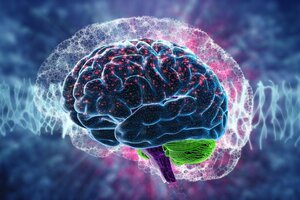Supplementation with dopamine and serotonin precursors could have neuroprotective effects in children with early-onset epilepsy
A team of researchers at the Institut de Recerca Sant Joan de Déu shows that supplementation with neurotransmitters such as dopamine and serotonin could protect the brains of children under the age of 3 with early-onset epilepsy. The article was published in the scientific journal Developmental Medicine & Child Neurology.
Epilepsy currently affects 1% of the entire population, of which 40% are children under 3 years of age. In many cases they are caused by genetic mutations that cause not only epilepsy a malfunction of neurological development in general, it is what is called: developmental epileptic encephalopathy (DEE).
"Epileptic encephalopathies in childhood cause severe cognitive and behavioral damage, which is why it is very important to control seizures early, which helps to improve psychomotor development." Says Dr. Àngels García Cazorla, head of the group Paediatric Neurometabolic Disorders: Neural Communication Mechanisms and Personalised Therapies.
Monoamines, such as catecholamines and serotonin, are the most representative group of neurotransmitters, and a decline in the brain had been linked to inherited diseases of neurotransmitter metabolism. However, recent studies show that a wide range of neurological disorders, such as epileptic encephalopathies, also show decreased levels of neurotransmitters in the cerebrospinal fluid.
The study of the cerebrospinal fluid is a common practice for the diagnosis of epilepsies of early origin that do not respond to pharmacological treatment, for this reason the research team wanted to explore what affectation of the neurotransmitters they saw in the cerebrospinal fluid.
"In this project, we studied the cerebrospinal fluid of 205 patients with epileptic encephalopathies and ED, who developed epilepsy for the first time during the first 3 years of life. In addition, we studied a group of patients who had altered serotonin and dopamine metabolism and their response to prescribed treatment. " Says the research team.
The decrease in neurotransmitter concentration is related to the patient's age and the duration of epilepsy
The research team identified abnormal neurotransmitter values in 33% of patients, most of whom had altered serotonin metabolism, especially in younger children.
"In this group of patients, we found that the concentration of serotonin metabolites was related to the duration of the epileptic seizure. Thus, children had had epilepsy for longer, tending to have lower serotonin levels. " comments Dr. Àngels Garcia Cazorla, neuropediatrician at SJD Barcelona Children’s Hospital.
"We also observed that patients receiving replacement therapy with neurotransmitter precursors had an initial decrease in the frequency and severity of seizures. In addition, they maintained an improvement in some neurological development skills. " Says researcher Natalia Juliá-Palacios of the IRSJD, the first author of the article.
Given these results, the team at the Institut de Recerca Sant Joan de Déu has shown that children with early-onset epileptic encephalopathies have altered neurotransmitter concentrations, and treatment with precursors may help to improve their neurological development.
This work would have repercussions on clinical practice by recommending the determination of neurotransmitter levels as well as their possible supplementation in these pathologies.
The study was carried out by a team of researchers from the Institut de Recerca Sant Joan de Déu, neuropediatricians from theSJD Barcelona Children's Hospita. Dr. Gabriella Horvath of Vancouver Hospital also participated in the study.
Reference article
Juliá-Palacios N, Molina- Anguita C, Sigatulina Bondarenko M, et al. Monoamine neurotransmitters in early epileptic encephalopathies: New insights into pathophysiology and therapy. Dev Med Child Neurol. 2022;00:1-9.

Patients who receiving replacement therapy with neurotransmitter precursors had an initial decrease in the frequency and severity of seizures.
